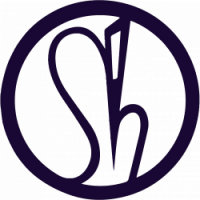Yang, B (2015) GDC: Practical VR for Disney Theme Parks
Accessed 16/12/19
Available at: https://www.youtube.com/watch?v=JEp1rq7VaiU
Imagineer Bei Yang talks about VR immersive experiences designed for Disney Theme Parks.
…VR would be a room within which the computer can control the existence of matter. A chair displayed in such a room would be good enough to sit in. Handcuffs displayed in such a room would be confining, a bullet displayed in such a room would be fatal – Ivan Sutherland (1965)
Reminds me of the GDC paper on cinematic environment control referred to how objects are copied from the real world but not their affordances…
History
Tech historical context included sutherlands head mounted display, Futureworld, Growth Graphics, Circle-Vision (panoramic video),
Eg: Futureworld
Head mounted Display
360 (circle vision) Video
Digital Projection (Caves)
Miltary, Disney VR tools
Motion Capture
The Future
Creating Immersive Experiences & the human perceptual system (IO) mismatches makes us feel like we are being poisoned (drunk and motion sickness) Ref Uncanny Valley.
Lightfields – Compresses lightfield through pinhole.
Think Spatial Resolution
Field of View: is 120 but with moving eye movements (Pixels per degree) 1.5 xscreen height for distance away. FOV needs to be inversely proportional.
Oculus/Gear VR Tech Spec:
Antialiasing is a problem.
Disney’s Digital Immersive Showroom (Cave) allows the team to view immersive designs before actual build.
Foveated Resolution
Temporal Resolution (relative to FPS)
Motion Blur – eye muscle judder can be solved with a higher Frame rate.
Don’t double motion Blur but increase frame rate
Lens: Depth of Field – takes light field and compresses to a small hole.
Converted Sphereity – eye-body proprioception.
Stop cinematic rendering: Turn off Depth of Field, Motion Blur, use highest FPS (unless required aesthetically)
The Optic Nerve – Brain – Sense of depth is not just stereo vision. Motion parallax is more important.
Perspective Correct Rendering (void glFrustrum)
Head Tracking eg: Disney Paris Ratatouille – Media Tracks with the vehicle.
Toy Story mania – Media Fakes relative Motion.
Digital Immersive Showroom 480kh
Scale and distances are harder to judge without a reference. Your body is the default reference point.
Caves offer better scale and distance judgement rather than VR headset.
AR offers an alternative headset where the player can see their hands as a reference.
The Cochlear hairs are the bodies internal tracking system.
Tracking quality – Total Latency and Latency variability should be reduced to avoid proprio-visual perception.
predictive filter can adversely affect Latency Variability and this can cause motion sickness.
Implement quality translational tracking.
Use Parallax.
Be aware of spatial perception (visual and proprioception) and provide a reference (even if own body reference is unavailable).
Keep consistency of latency in mind.
- Avoid zero degree turns. (What makes you motion sick in real life will make you sick in VR)
- Direct Manipulation
- Direct Navigation – bird flight, magic carpet (Aladdin’s magic carpet ride)
- Make people feel powerful (in miniature worlds the player feels BIG and powerful 🙂
- No Defined scale in VR (The world of Miniature) – Disneyland Paris Ratatoui)
- Perceive the world through Motion Cues use many planes of motion.
Walk the Plank (Physical sense of the plank under feet when on a virtual plank over the cliff)The Haptics matched.
Touching yourself is a form of haptics and so match real world objects to virtual objects (research matching affordances as well).
Eg: Room alive : Microsoft Research.
Eg: Indiana Jones : Mara Statue – Change the media properties of the statue through projection. Through tracking can be altered for the visitor.
Eg: Goofy’s paint and play house –
Eg: Augmented Reality Cookies : University of Tokyo – The sense of taste is directly related to the sense of smell.
Eg: Soarin’ over California – Smell O Vision.
Apply to project:
- Try to Achieve the Highest Frames Per Second on the Gear VR headset.
- Use environment design to implement parallax motion.
- Try to alter the start Staircase into a smooth ramp to avoid bounce (and motion sickness)
- Add player controller in the scene view to give a sense of reference (I don’t really like the fake hands)
- Be wary of predictive filters as these can cause latency issues.
- Slow down sharp player turns and design layout so this is less likely to be an option.
- Add large flowers to make players feel BIG when in the enchanted night garden staircase.
- The paper headset would correspond to the virtual in the game but this will be difficult to implement on the gear VR (due to clicking and removing the mobile phone.. I think).
- I could add any haptic cues in the live event set up such as smell (toffee apples at the end?) or papery chair to sit in, Paper Cards to shuffle.
- I could use a flight hoist to give a sense of floating or flying around the set but I use the players experience of gravity to fall down the hole.

